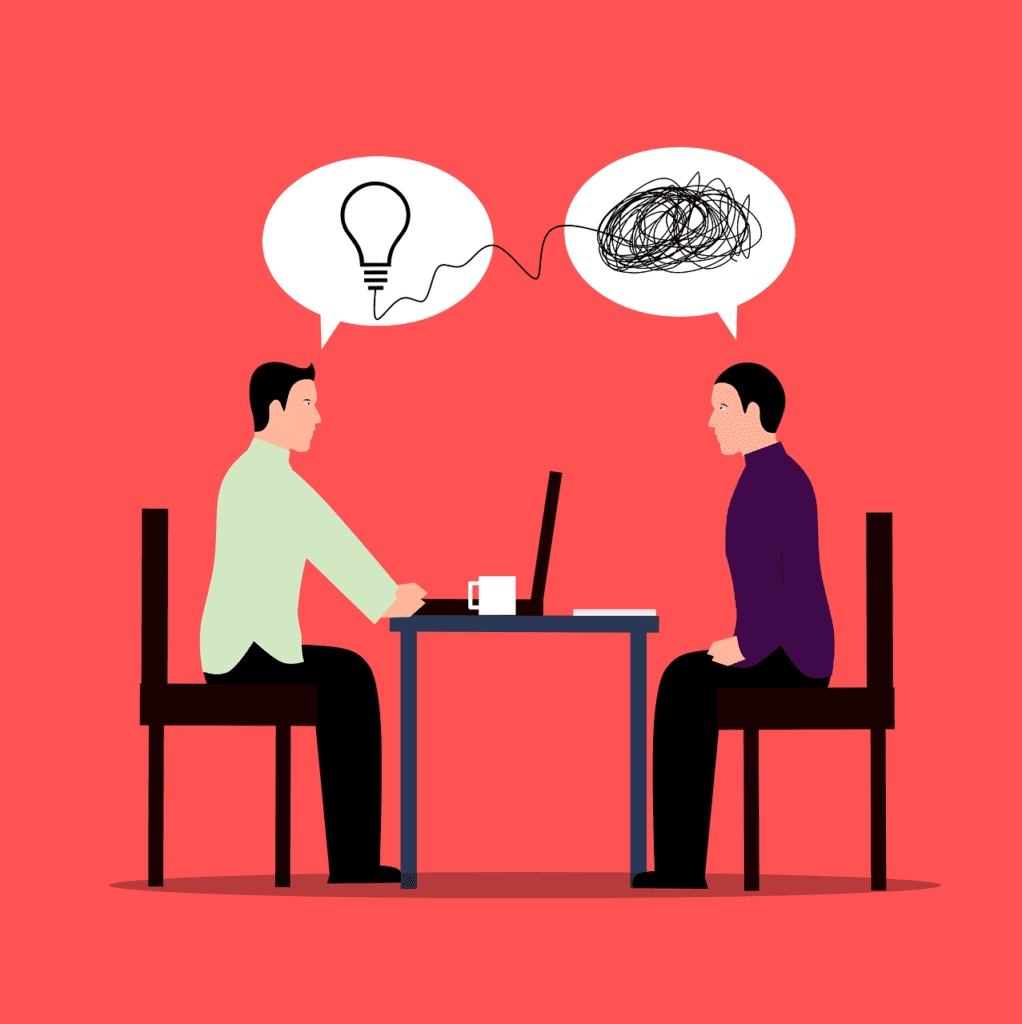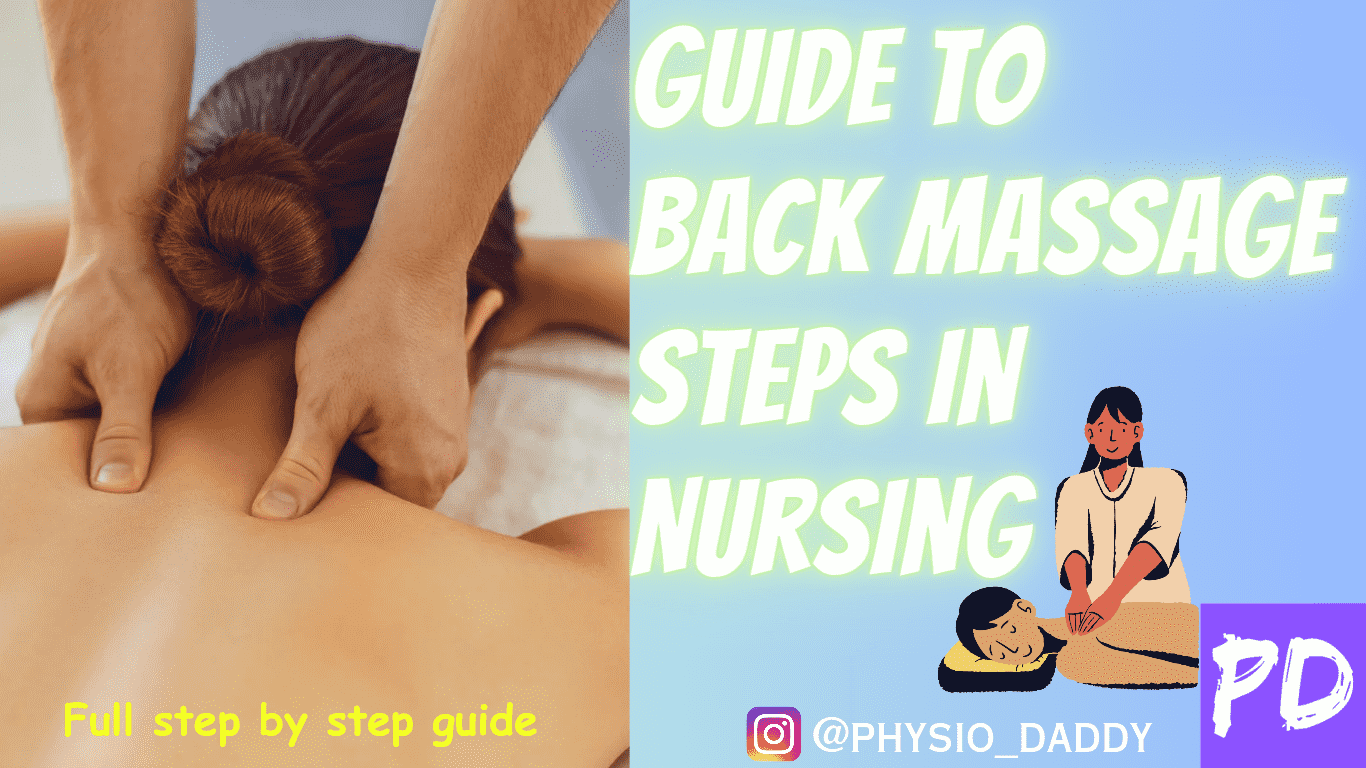In the field of nursing, providing optimal care and comfort to patients is of utmost importance. One effective way to enhance patient well-being is through back massage.
Back massages have been shown to alleviate pain, reduce muscle tension, promote relaxation, and improve overall patient satisfaction.
In this comprehensive guide, we will explore the essential steps involved in performing a back massage in a nursing setting. Whether you are a novice nurse or an experienced professional looking to refresh your skills
In this article will equip you with the knowledge and techniques necessary to provide an effective and soothing back massage to your patients.
Benefits of Back Massage in Nursing

Back massage offers numerous benefits to patients in a nursing setting.
It can alleviate pain and discomfort, reduce muscle tension, promote circulation, relieve stress and anxiety, enhance relaxation, and improve overall patient well-being.
Research has shown that back massage can also lead to improved sleep quality, increased range of motion, and better overall patient satisfaction.
By incorporating back massage into their nursing practice, caregivers can effectively address the physical and emotional needs of their patients.
Preparing for the Back Massage

Before initiating a back massage, it is essential to ensure that the patient is comfortable, informed, and willing to receive the massage.
Obtain the patient’s consent and gather information about their medical history, current condition, and any specific areas of concern. Prepare the necessary supplies, including massage oil or lotion, clean towels, and a comfortable surface for the patient to lie on.
Take into account any precautions or contraindications based on the patient’s condition.
Setting Up the Environment

Creating a soothing environment is crucial for an effective back massage.
Dim the lights, play soft background music, and adjust the room temperature to ensure the patient’s comfort. Remove any potential distractions, such as ringing phones or loud noises.
Make sure the massage area is clean, well-ventilated, and free from clutter. By setting up a relaxing atmosphere, you can enhance the overall experience for the patient.
The Step-by-Step Back Massage Technique

1. Communication and Consent
Establish clear and effective communication with the patient throughout the massage session.
Explain the procedure, inform the patient about the expected sensations, and encourage them to communicate their comfort level.
Obtain their consent and ensure that they feel at ease throughout the process.
2. Positioning the Patient
Help the patient assume a comfortable position for the massage.
Typically, the patient lies face-down on a massage table or bed with a pillow positioned under their chest and a towel draped over their lower back for modesty.
Adjust the height of the table or bed to ensure proper ergonomics for the caregiver.
3. Applying Massage Oil
Apply a small amount of massage oil or lotion to your hands and warm it up by rubbing them together.
This helps to create a smooth and gentle glide over the patient’s skin while avoiding friction.
Ensure that the chosen oil or lotion is hypoallergenic and suitable for the patient’s skin type.
4. Effleurage: Gentle Stroking Movements
Effleurage involves long, sweeping strokes using the palms of your hands.
Begin at the patient’s neck and slowly move down their back, applying gentle pressure.
This technique helps to warm up the muscles, improve blood circulation, and induce relaxation.
5. Petrissage: Kneading and Squeezing Muscles
Petrissage involves using kneading and squeezing motions to release tension in the muscles.
Use your fingertips, palms, and knuckles to apply deep pressure in a controlled manner.
Focus on areas of muscle tightness or discomfort, and adjust your pressure based on the patient’s feedback.
6. Friction: Deep Tissue Work
Friction involves deep tissue work to address specific muscle knots or adhesions.
Use your thumbs or fingertips to apply targeted pressure in a circular or cross-fiber motion.
This technique can help break down scar tissue, improve flexibility, and relieve pain in localized areas.
7. Tapotement: Rhythmic Tapping
Tapotement consists of rhythmic tapping or percussive movements using the sides of your hands, cupped hands, or fingertips.
This technique promotes muscle relaxation, stimulates nerve endings, and invigorates the tissues. Use this technique sparingly and avoid it on bony areas or sensitive regions.
8. Effleurage: Closing the Massage
Conclude the back massage with effleurage strokes similar to those used at the beginning.
Gradually reduce the pressure and speed of your strokes, providing a gentle and soothing transition.
This helps to calm the patient’s nervous system and prepare them for the conclusion of the session.
9. Post-Massage Evaluation and Documentation
After the massage, evaluate the patient’s response and document any notable changes or concerns.
Note the patient’s overall comfort level, any specific feedback they provided, and any recommendations for future sessions.
Proper documentation ensures continuity of care and facilitates effective communication with the healthcare team.
Safety Precautions and Contraindications
While back massage is generally safe, there are certain precautions and contraindications to be aware of.
Avoid massaging areas with open wounds, infections, or skin conditions. Take caution with patients who have osteoporosis, fractures, or recent surgeries.
Additionally, consider any specific medical conditions, such as cardiovascular issues or blood clotting disorders, which may require modifications to the massage technique.
Conclusion
Back massage is a valuable tool in nursing care, offering numerous benefits to patients in terms of pain relief, relaxation, and overall well-being.
By following the step-by-step technique outlined in this guide and taking necessary safety precautions, nurses can effectively incorporate back massage into their practice.
Remember to communicate with patients, create a soothing environment, and adapt the massage to each individual’s needs. By mastering this skill, nurses can provide a holistic approach.


